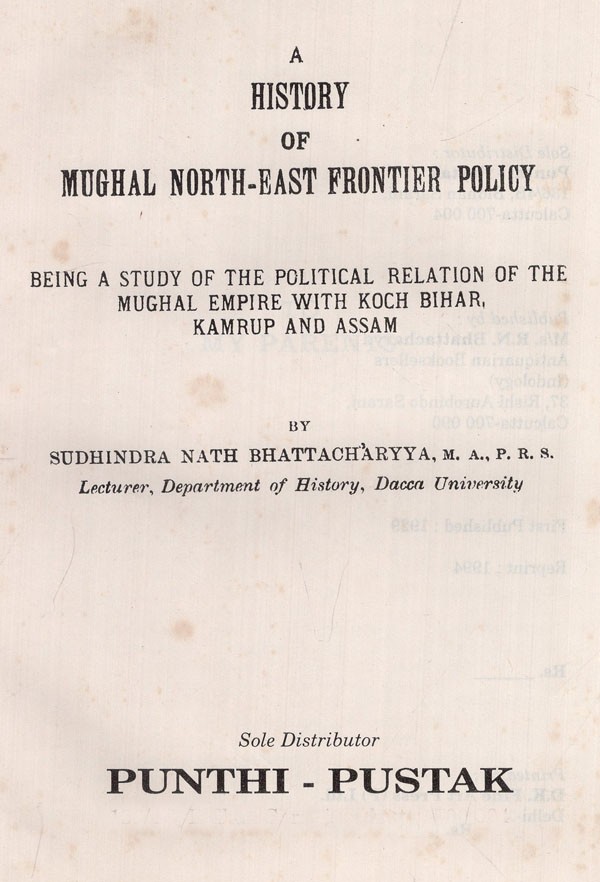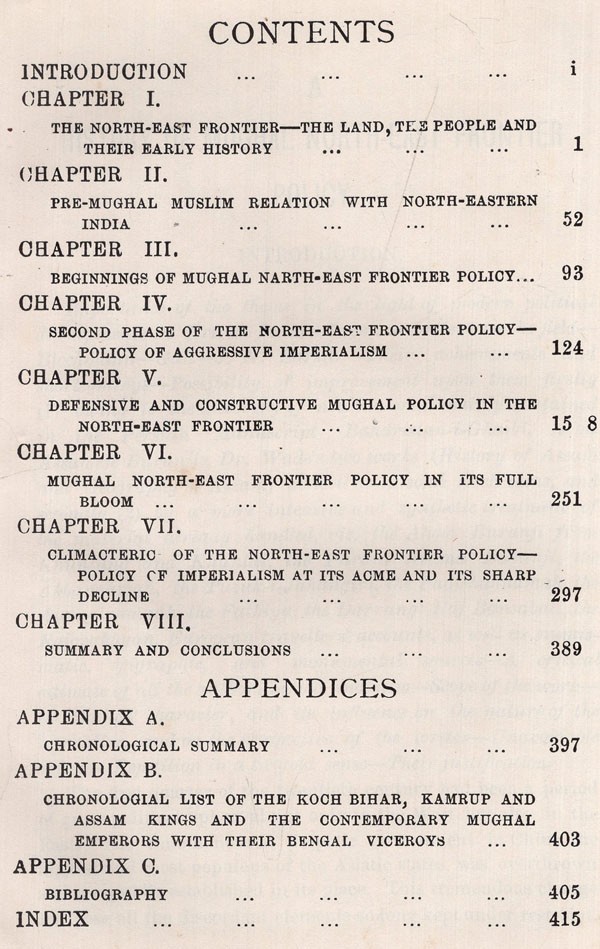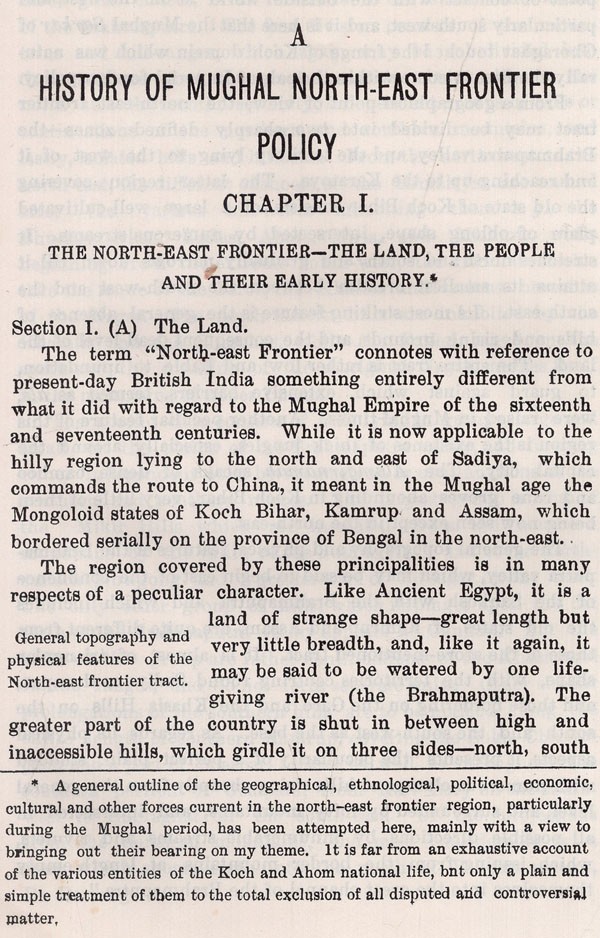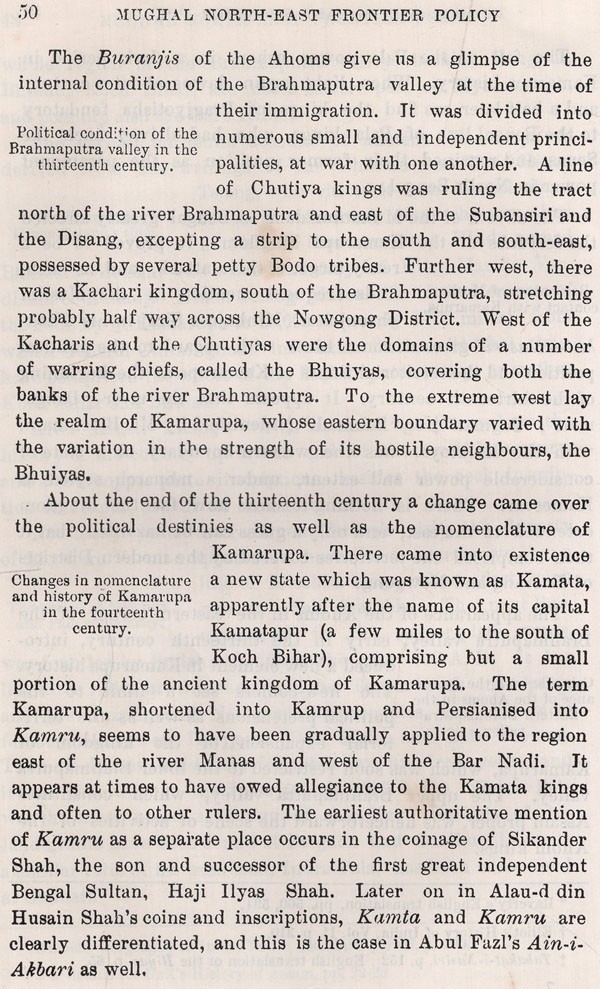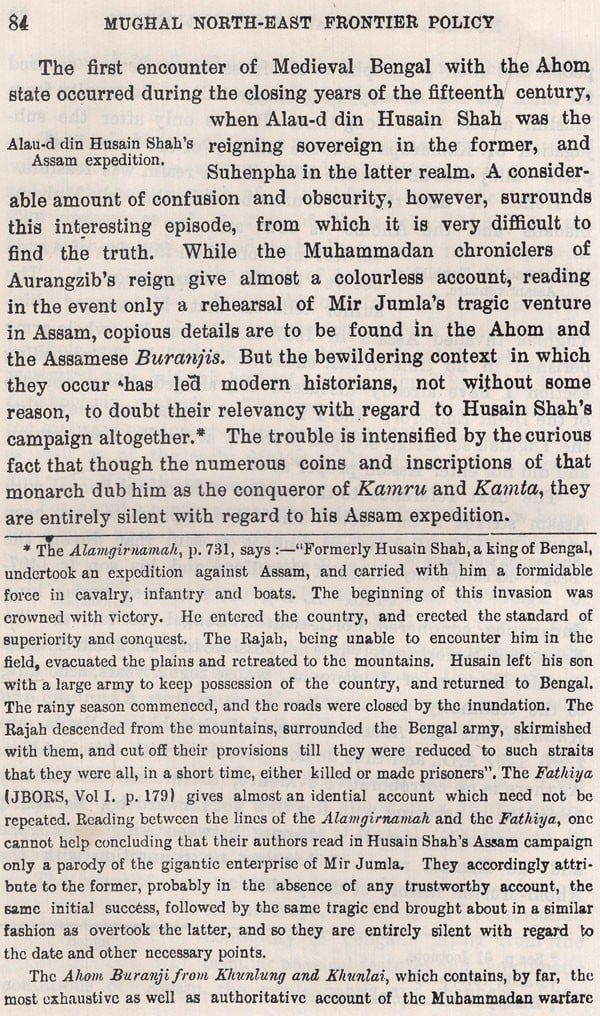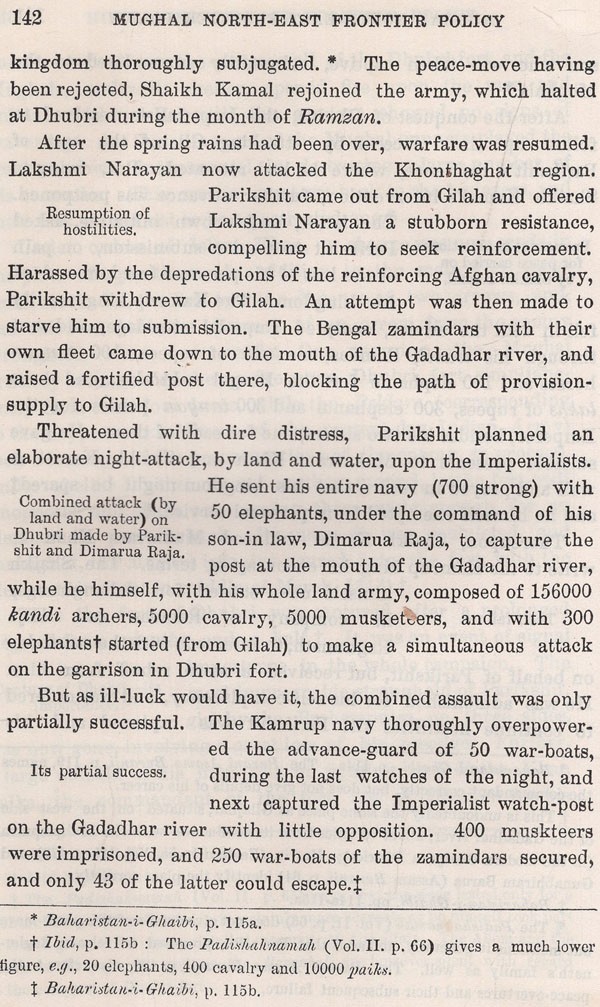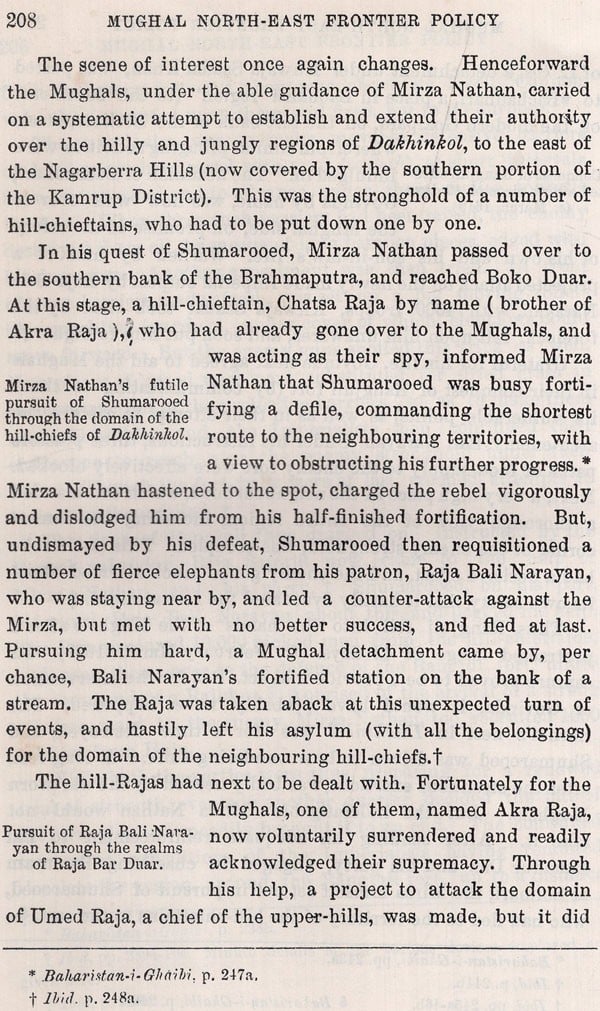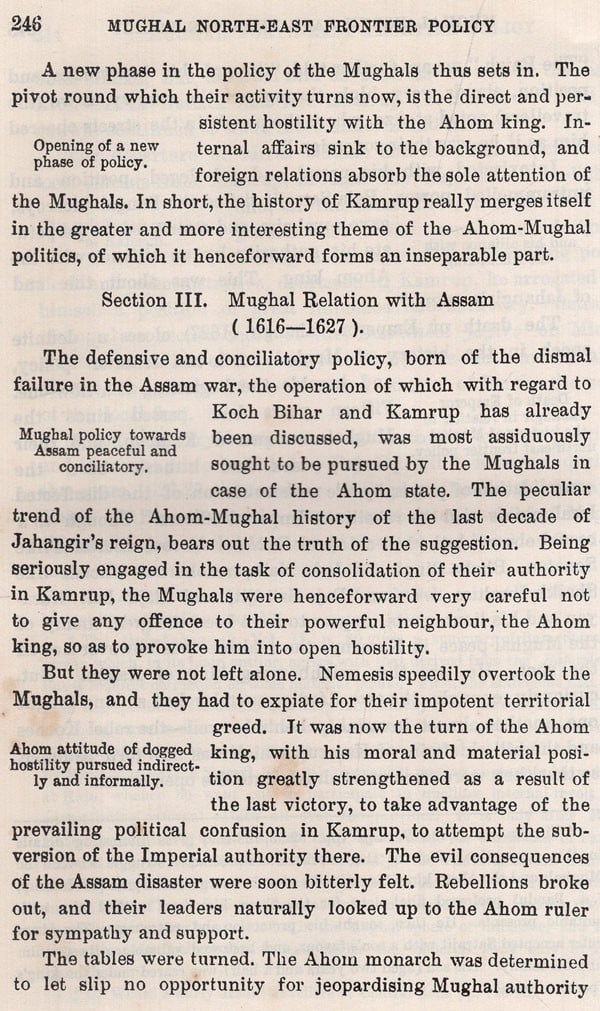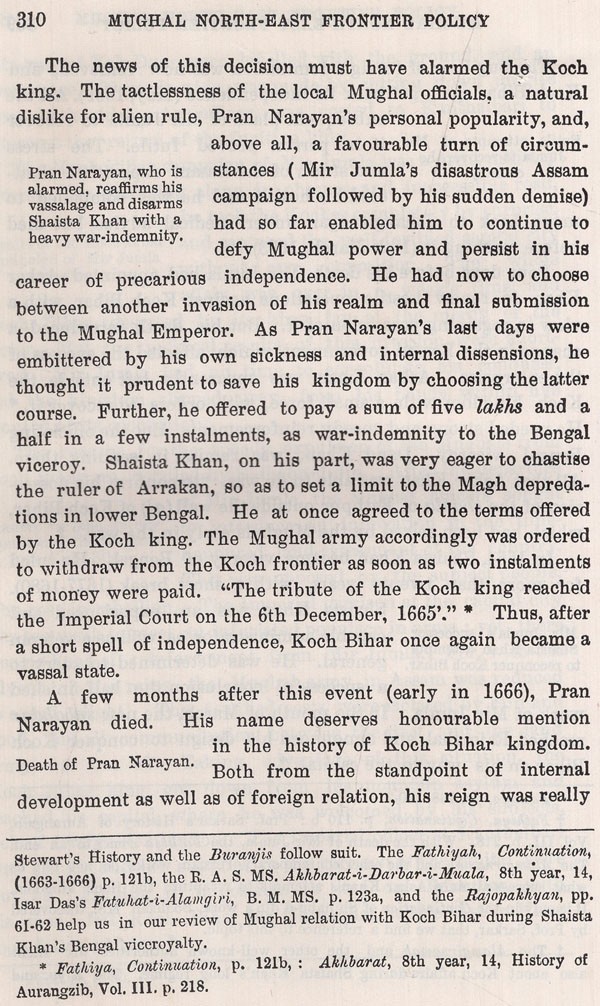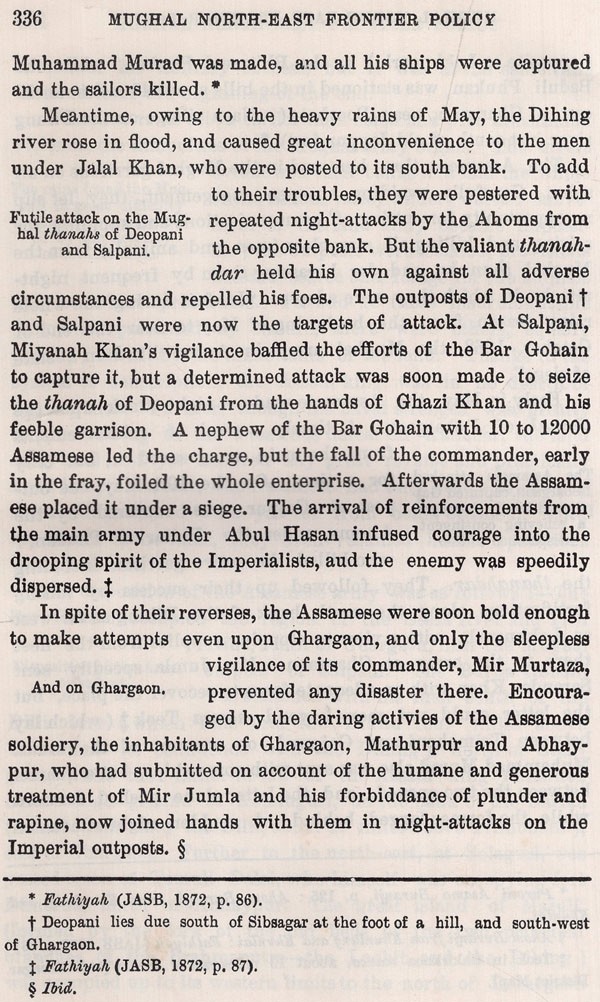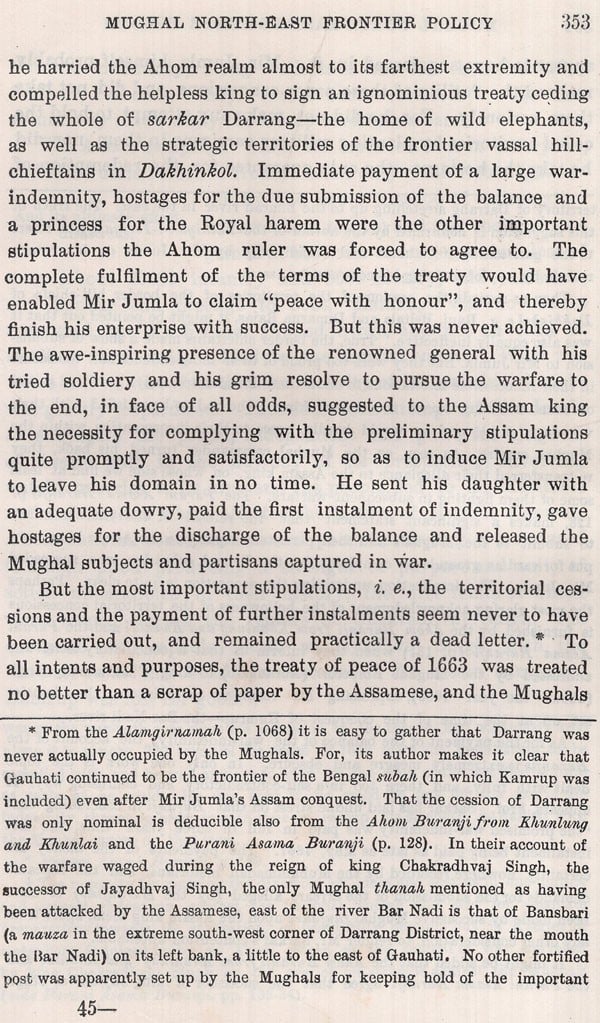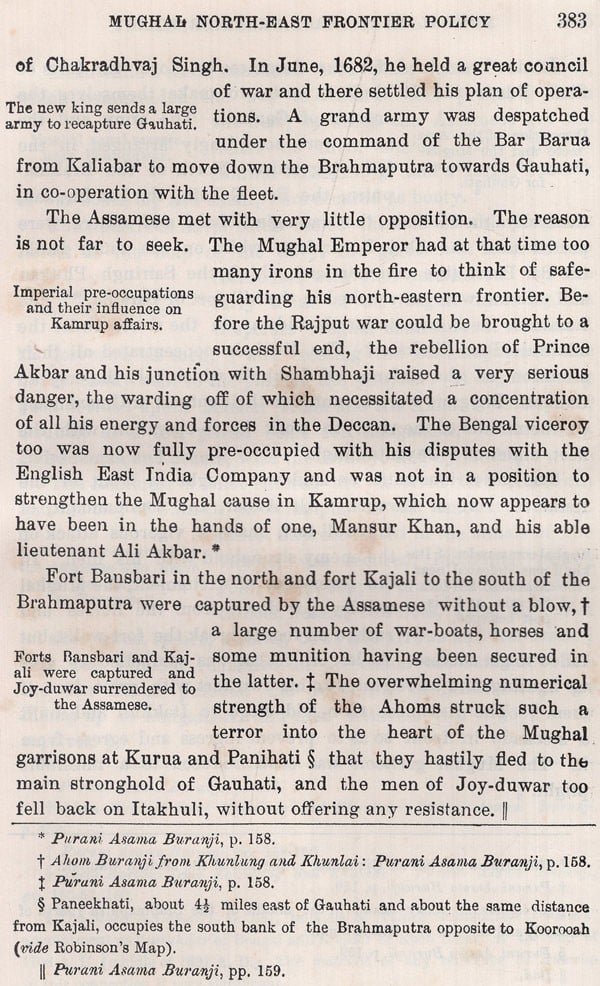
A History of Mughal North-East Frontier Policy (An Old and Rare Book)
Book Specification
| Item Code: | UAW124 |
| Author: | Sudhindra Nath Bhattacharyya |
| Publisher: | R.N. Bhattacharya, Kolkata |
| Language: | English |
| Edition: | 1994 |
| Pages: | 446 |
| Cover: | HARDCOVER |
| Other Details | 8.50 X 5.50 inch |
| Weight | 590 gm |
Book Description
The object of the present work is to make an attempt to fill a gap in the history of Mughal India. The political relation of the Mughal Empire with the Mongoloid states of Koch Bihar. Kamrup and Assam on its north-east frontier is really an interesting theme, but no serious attempt seems to have been made so far to work it up. The suggestion for taking up this subject was first given to the writer by professor Jadu Nath Sarkar, the distinguished historian of Aurangzib. He contributed a valuable article to the Journal of the Bihar and Orissa Research Society. March, 1921, containing an analysis of the contents of the Baharistan-i-Ghaibi-a Manuscript History of Bengal and Orissa during Jahangir's reign, written in Persian by one of his own officers, which offered the prospect of a vast amount of new material for this topic.
Importance of the theme in the light of modern political developments in British India-Previous writers on the field Blochmann-Gait-J. N. Sarkar-Their achievements and shortcomings-Possibility of improvement upon them firstly (1) owing to the discovery of new material mainly contained in the Persian Manuscript Baharistan-i-Ghaibi, some Assamese Buranjis, Dr. Wade's two works (History of Assam and Geography of Assam) as well as in some Koch coins, and secondly (2) by a more intensive and synthetic treatment of the material already handled, viz. the Ahom Buranji from Khunlung and Khunlai, the Purani Asama Buranji, the Akbarnamah, the Tuzuk-i-Jahangiri, the Pudishahnamah, the Alamgirnamah, the Fathiya, the Darrang Raj Bansabali, the Rajopakhyan, European travellers' accounts, as well as numis and monumental sources-A critical matic, epigraphic, and estimate of all the authorities old and new-Scope of the work its limited character, and its influence on the nature of the narrative, and on the perspective of the writer-Unavoidable defects-Repetition in a tenfold sense-Their justification.
**Contents and Sample Pages**
